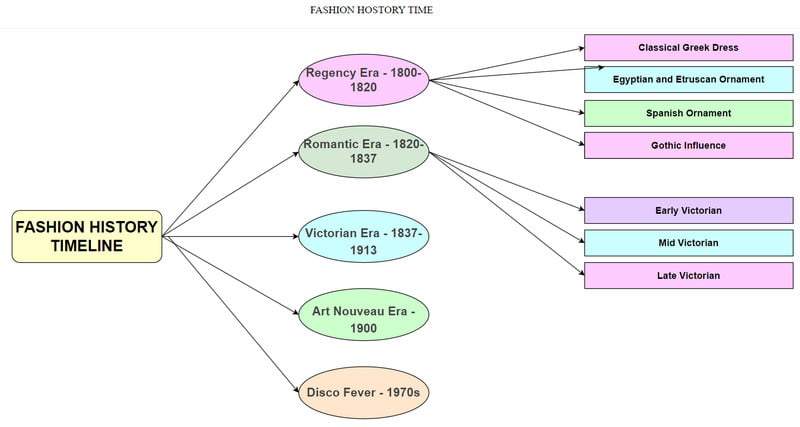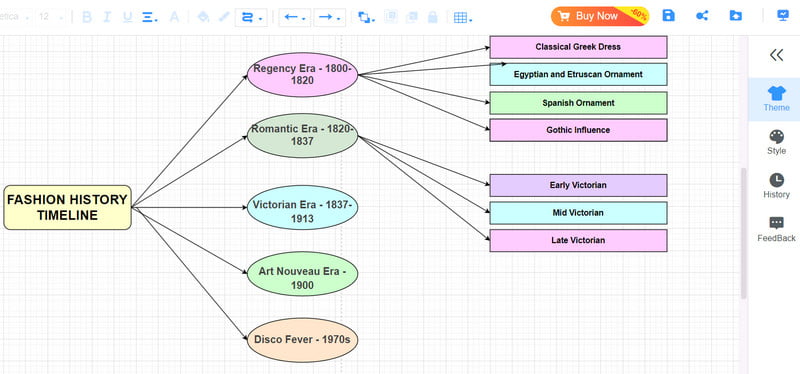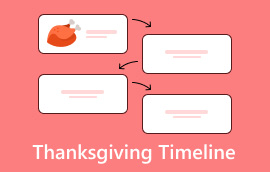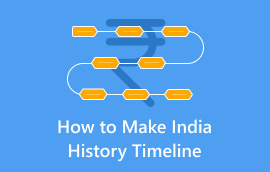See the Best Fashion History Timeline [Complete Explanation]
Fashion is a part of culture, a reflection of society, and an individual expression. It has evolved dramatically throughout history, from the gowns of the Renaissance to the creative designs of the modern era. It has also mirrored the changing world around us. So, if you are eager to learn more about the history of the timeline, you can use this post as an excellent reference. This post will discuss everything about the Fashion history timeline. With that, you will get an idea of how fashion evolved from then to now. Therefore, read all the information from this article to learn more about fashion.

- Part 1. Fashion History Timeline
- Part 2. Fashion History Timeline Creator
- Part 3. FAQs about Fashion History Timeline
Part 1. Fashion History Timeline
This section will show you the complete timeline of Fashion history. With that, you will get an idea of how the cloning styles became better and better chronologically. You will also see an amazing visual presentation so that you can understand the timeline better. Without anything else, let's begin tackling everything about the Fashion evolution timeline.

See here the complete timeline of Fashion history.
Regency Era - 1800-1820
Regency fashion was prevalent from 1800 to 1820. It drew inspiration from classical principles and the common and latest fashion trends of the time. The dress style was characterized by intricate details and great ornamentation, reflecting the sophistication and elegance of the era. See all the clothing styles you can discover in this era.
Classical Greek Dress: From 1800 to 1803, the prevailing clothing style was classical. It featured decorations and ornaments heavily inspired by Greek designs. One of the included designs is the key border, which was among the popular elements in clothing during this era.
Egyptian and Etruscan Ornament: From 1803 to 1807, the clothing continued to be classical. However, it had an additional design, which was more exotic in terms of ornamentation. The elements were inspired by Etruscan geometric design. It also included ornamentation influenced by Asian and Egyptian Culture.
Spanish Ornament: The Spanish ornamentation started to be incorporated into classical dress styles in 1808. This influence resulted in a distinctive and unique look. It also features a mix of intricate Spanish-inspired ornament and classical lines.
Gothic Influence: During this period (1811), the classical clothing style dress was lost. It is also considered the birth of Gothic influence where the Gothic Line was introduced, which lasted until 1820.
Romantic Era - 1820-1837
The influence of Gothic clothing remained during the Romantic Era. In this era, it has an image of the military male dress, which is considered romantic next to a female dress. This type of clothing style lingered on until 1850, which was in the early years of the Victorian Era.
Victorian Era - 1837-1913
The Victorian Era Fashion timeline was divided into smaller periods, each with its influences and characteristics.
Early Victorian Era: With Queen Victoria's coronation in 1836, the Romantic Era drew to a close. The dress styles from 1837 to 1856 are known as Early Victorian. There are times when the style is called the Crinoline Era. It was during this time that Charles Worth made his name as the first modern Couturier.
Mid-Victorian Dress: This period spanned from 1860 to 1882 and is characterized by its distinct design and style elements. The mid-Victorian Era is also called the First Bustle Era because of the use of bustles in women's fashion. These bustles are undergarments designed to create fullness in the back of the skirt, creating an excellent silhouette, which was common and popular at the time.
Late Victorian Dress: This era spanned from 1883 to 1901. It noticed several distinctive fashion trends, including the Second Bustle Era and the Gibson Girl style. Intricate establishments and details, such as embroidery, beadwork, and lace, also marked it. Therefore, this era represents a period of evolution and transition in fashion, which changes social values and norms.
Art Nouveau Era - 1900
The next era was the Art Nouveau Era. This era focuses on textiles and clothing. The Edwardian hostess's attire reflects the long, stylized flowers flowing. It embroidered borders with trails of organic forms characteristic of Art Nouveau. Their skirts flowed and belled out like flower forms that were like opening a floral form. The ornamentation portrayed the elegant Art Nouveau shapes. These textile trends were revived back to life in the 1960s by the House of Liberty.
Disco Fever - 1970s
In the history of fashion design timeline, this era is among the period that introduces unique clothing styles. Disco clothing was always reserved for fun, posturing, and dancing on the weekends. This clothing style is not for the workplace. Trousers that flattered, figure-hugging, flared, smartly cut coats in pastel colors. This type of design became the trend in this era.
Until now, clothing styles have kept evolving. Various styles in various countries are getting better and better, which is worth discovering. So, if you want to track the evolving fashion, it is best to start discovering its history to get more insight into how it started.
Part 2. Fashion History Timeline Creator

Do you want to create your fashion timeline? In that case, use MindOnMap. This online-based timeline creator can help you make an excellent timeline. It is because it can provide all the functions you need. It includes shapes, lines, arrows, colors, text, and more. Aside from that, you can select your preferred theme to make your visual more engaging and colorful. Plus, the process of making the timeline is easy. You can use various templates or create from scratch. The best thing here is that you can save the result on your account. With that, you can preserve your output and use it as your future reference. Moreover, MindOnMap can offer both online and offline versions. With that, no matter what platform you use, you can access the tool easily and quickly. So, try this timeline creator right away and begin creating your timeline.
Secure Download
Secure Download
Part 3. FAQs about Fashion History Timeline
When did the Victorian-era fashion timeline start?
The era started in 1837 and was divided into smaller periods: the Early Victorian Era, the Mid Victorian Era, and the Late Victorian Era.
What is a women's fashion timeline?
It is about the clothing styles for women. As we all know, their clothing differs per era. As time goes by, the dress styles become perfect due to various designs, lines, ornamentation, and more. Often the fashion timeline will be shown with a timeline creator clearly.
When did fashion start in history?
Based on the study of some historians, fashion started in the middle of the 14th century. However, it is still unsure since illuminated manuscripts are uncommon during the 14th century.
Conclusion
Learning the Fashion history timeline is helpful if you want to track the history of fashion. It can be an amazing visual presentation that helps you understand. That's why this post was created to provide detailed information about the discussion. Also, if you want to make your timeline, grab the chance to access MidnOnMap on your device. This tool will provide all the functions you need to achieve a perfect timeline.










